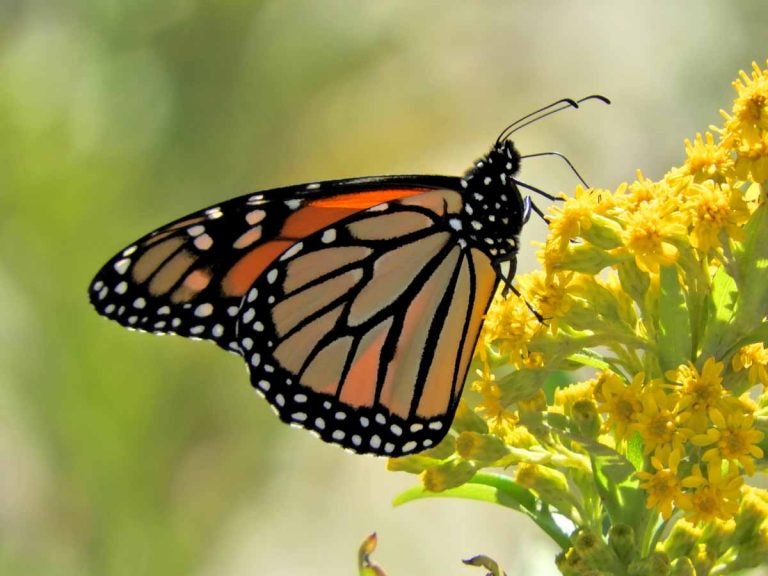Monarch butterfly migration season heats up in Cape May
Like clockwork, the monarch butterfly migration season along the Jersey Shore is heating up.

A monarch butterfly in Cape May, New Jersey. (Courtesy of Mark Garland)
Like clockwork, the monarch butterfly migration season along the Jersey Shore is heating up.
The migration season, when the butterflies head to Mexico for the winter, begins on September 1 and generally ends around October 31, although last season saw stragglers through early November.
In Cape May, a strategic stopover for a 3,000 mile migration from Canada to Mexico, the Monarch Monitoring Project recorded the highest census count of the season in recent days. According to the organization, whose members affix “tags” on the butterflies, 105 monarchs were counted in 20 minutes last Friday.
Last season featured the highest monarch counts in four years, with warm weather resulting in a late season influx.
[Related: Why Cape May’s monarch butterfly migration population varies so much]
In 2014, Sarina Jepsen of the Xerces Society, one of the three conservation groups petitioning the federal government for protected status, told WHYY that the monarch populations counted at wintering sites in Mexico have declined by about 90 percent in 20 years.
The causes, she says, are a loss of habitat and the decrease in available milkweed, the monarch caterpillar’s only food.
At the time, Cape May Bird Association’s Chris Tonkinson hypothesized that is because a main factor hurting monarchs worldwide isn’t as big of an issue here: the killing of milkweed plants by herbicides in Midwestern farm country.
“The monarchs that have made their way to the upper Northeast, as they come down the East coast they’re not as exposed to that big agriculture phenomenon,” Tonkinson said, “So there’s a lot more habitat and milkweed for them comparatively.”
The Monarch Monitoring Project encourages people to plant milkweed.
“Planting a milkweed patch creates an entire community of organisms that both depend on the milkweed and each other for survival,” an organization blog post states. “If you have a patch of milkweed at home, keep a lookout for these other milkweed dependent bugs, and you can start to look at the milkweed patch not only as food for monarchs, but as a village with many different residents!”
WHYY is your source for fact-based, in-depth journalism and information. As a nonprofit organization, we rely on financial support from readers like you. Please give today.




